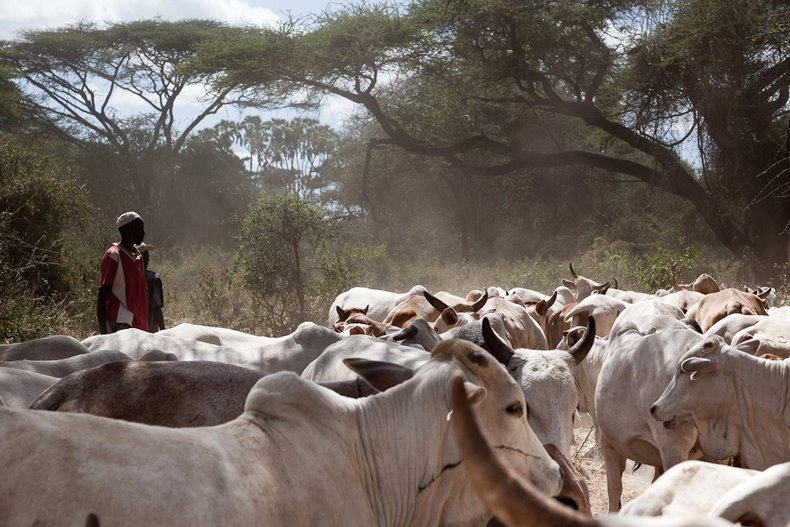Why protecting Kenya’s pastoralists is key to meat industry growth
Pastoralists produce most of Kenya’s livestock, yet they remain among the most vulnerable in the meat value chain. At the Kenya Meat Expo, experts called for urgent action to address climate shocks, land conflicts, and chronic underfunding in the livestock sector.
By Sandra Neddy
info@smartfarmerkenya.com
At the heart of Kenya’s meat value chain lies an often-overlooked truth: pastoralists, who produce the bulk of the country’s livestock, remain among its most vulnerable players. Communities in the Arid and Semi-Arid Lands (ASALs) face some of the toughest challenges, despite being central to livestock production and the meat industry.
From insecurity in the region to climate-induced shocks such as prolonged droughts and extreme floods, pastoralists face constant threats to their livelihoods. The loss of livestock, shrinking grazing lands, and limited access to water trigger food insecurity, fuel competition over scarce resources, and heighten conflict — deepening poverty in these regions.
According to the Kenya National Drought Management Authority (NDMA), the 2020–2023 drought — the worst in 40 years — killed over 2.5 million livestock in Kenya’s ASALs. Millions were left in urgent need of food and water, and many pastoral households were pushed into extreme poverty.
It is against this backdrop that the fourth edition of the Kenya Meat Expo took place in Nairobi, under the theme ‘Driving Sustainable Growth Across the Meat Value Chain’. The event brought together key industry players to explore innovative solutions in livestock production, with a special focus on safeguarding the ASAL communities who keep the meat value chain moving.
“This is not just a community problem; it’s a national struggle with dire consequences. Once pastoralists lose their livestock, the entire meat value chain is disrupted,” said Abdinajib Aden, a representative of the Garissa Butchers Cooperative Society at the expo.
A study by Strathmore University’s Agri-Food Innovation Centre shows that 88% of Kenya’s livestock comes from pure pastoralists and agro-pastoralists — underscoring how any disruption at this level reverberates across the entire chain.
To shield their herds from drought and dwindling pastures, pastoralist communities have begun adopting sustainable methods such as irrigated farming of Super Napier grass — a drought-tolerant, fast-growing fodder that thrives in ASALs. With up to five times the yield of ordinary Napier, it ensures a consistent, high-quality feed supply even during dry seasons, boosting both milk and meat production.
However, experts caution that pastoralists have long been sidelined. Mohammed Elmi, Chairperson of the National Livestock Development and Promotion Service, noted that despite the availability of technology and training, pastoral communities are often neglected. He emphasised the need to organise them into structured groups and create systems that support them, especially during climate-induced shocks.
“The biggest challenge remains drought. Our plan is to establish a national fodder bank to provide affordable feed reserves during the critical final months of drought, when livestock deaths are most likely,” Elmi said.
Land tenure is also a thorny issue. In the communal pastoral system, disputes are almost inevitable. A 2023 study by the International Livestock Research Institute (ILRI) found that over 70% of land conflicts in Kenya’s ASALs stem from unclear tenure systems and encroachment on communal grazing lands. Experts at the expo stressed that the priority should be full enforcement of existing land laws and policies, rather than drafting new ones.
“We should focus on fully implementing the National Land Policy and the Community Land Act, which are already in place,” said Kenneth Nyaseda, an urban land management expert.
The private sector has played a key role in supporting sustainability across the meat value chain, investing in feed production, slaughterhouse infrastructure, value addition, and market access. However, the livestock sector remains grossly underfunded. Data from the African Union–InterAfrican Bureau for Animal Resources (AU-IBAR) shows that while over $500 million has been invested in agriculture, only 10% has gone to livestock. AU-IBAR is calling for stronger public–private partnerships to unlock the sector’s full potential.
In closing, the experts urged the adoption of participatory rangeland management systems to strengthen the resilience of pastoral communities. They emphasised that the sustainability and growth of the livestock value chain is not just a local or national matter — it’s a global conversation that demands collective action.



